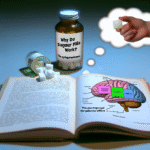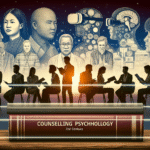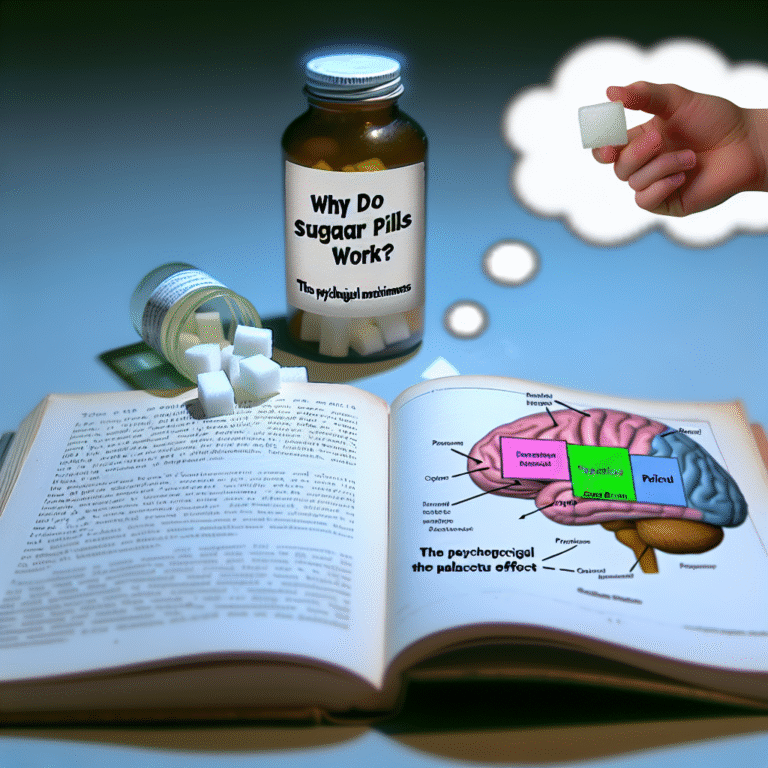
The Ultimate Guide to Understanding The Cycle of Addiction: How Psychology Explains Our Habitual Patterns
Introduction
Addiction is a powerful force that affects millions of individuals around the globe. Whether it manifests through substance abuse, compulsive behaviors, or even technology overuse, the cycle of addiction can feel insurmountable. Yet, understanding the psychology behind this cycle can provide valuable insights for breaking free from its grip. This article delves deeply into The Cycle of Addiction: How Psychology Explains Our Habitual Patterns and offers actionable strategies for overcoming the challenges posed by addiction.
Understanding Addiction: A Psychological Perspective
What is Addiction?
Addiction can be defined as a compulsive engagement in rewarding stimuli, despite adverse consequences. It is not limited to drugs or alcohol; it also includes behaviors such as gambling, eating, and even social media use.
The Brain’s Reward System
At the heart of addiction lies the brain’s reward system. Dopamine, often called the "feel-good" neurotransmitter, plays a pivotal role. When we engage in pleasurable activities, dopamine levels surge, reinforcing the behavior. However, over time, this leads to a decrease in the brain’s sensitivity to dopamine, creating a vicious cycle where more of the addictive substance or behavior is needed to achieve the same effect.
The Cycle of Addiction
The cycle of addiction consists of four main stages: Trigger, Craving, Use, and Consequence. Understanding this cycle is vital for anyone looking to break free from habitual patterns.
| Stage | Description |
|---|---|
| Trigger | Events or feelings that prompt the desire to engage in addictive behavior. |
| Craving | The intense desire or urge to use the substance or engage in the behavior. |
| Use | The actual engagement with the substance or behavior. |
| Consequence | The negative outcomes resulting from use, which can reinforce the cycle. |
Case Study: Mary’s Struggle with Alcohol Addiction
Mary, a 32-year-old teacher, found herself trapped in the cycle of addiction when she began to rely on alcohol to cope with stress.
Trigger
Mary often felt overwhelmed with her job, leading her to seek out alcohol as a stress reliever. The high-pressure environment acted as a trigger for her cravings.
Craving
In social situations, Mary would feel an urge to drink more than her peers. This craving was not only for the alcohol but for the perceived ease it brought to her life.
Use
Her drinking escalated from an occasional glass of wine to handling several drinks weekly, especially after stressful days.
Consequence
Mary faced severe consequences: strained relationships, health issues, and job performance decline. Ironically, these consequences made her crave the alcohol even more, as it temporarily alleviated feelings of guilt and shame.
Analysis
Mary’s story exemplifies The Cycle of Addiction: How Psychology Explains Our Habitual Patterns. Each stage flows into the next, creating a loop that becomes increasingly difficult to escape.
Breaking the Cycle of Addiction
Self-Awareness and Reflection
Understanding one’s triggers is crucial. Keeping a journal can help individuals like Mary identify what leads them to drink, allowing for proactive steps to manage those triggers.
Seeking Professional Help
Therapy, such as Cognitive Behavioral Therapy (CBT), has proven effective in helping individuals recognize and reshape their thought patterns related to addiction.
Building a Support Network
Family and friends can provide crucial support. Joining support groups, like Alcoholics Anonymous, can offer encouragement and accountability in the recovery process.
Mindfulness and Coping Strategies
Practicing mindfulness helps individuals stay present and manage cravings. Techniques such as meditation or deep-breathing exercises can provide tools for handling stress without reverting to addictive behaviors.
Case Study: John’s Battle with Compulsive Gambling
John, a 45-year-old accountant, struggled with a gambling addiction that threatened to destroy his family and career.
Trigger
For John, stress from work was his trigger, leading him to the allure of the casino as an escape.
Craving
The thrill of winning became a powerful craving that overshadowed the potential for loss.
Use
John found himself frequently at the casino, often using money meant for bills and family commitments.
Consequence
The consequences were dire: massive debts, strained relationships, and a decline in job performance that led to job loss. These negative outcomes only fueled his need to gamble, hoping to win back what he lost.
Analysis
John’s experience illustrates the destructive nature of The Cycle of Addiction: How Psychology Explains Our Habitual Patterns. His inability to manage stress without gambling solidified his position in the cycle.
The Role of Psychology in Addiction Recovery
Understanding Behavioral Triggers
Psychology offers insights into understanding one’s behavior and thought patterns. By analyzing automatic thoughts linked to addiction, individuals can begin to unravel the reasons behind their compulsive behaviors.
Cognitive Behavioral Therapy (CBT)
CBT focuses on changing unhelpful cognitive distortions and behaviors associated with addiction. For example, individuals learn to recognize triggers, challenge irrational thoughts, and develop healthier coping mechanisms.
The Importance of Emotions
Often, addiction serves as a coping mechanism for underlying emotional issues like anxiety and depression. Addressing these emotions through therapy can lead to healthier patterns of behavior.
Tools and Strategies for Breaking the Cycle
Identify Your Triggers
Journaling can help you pinpoint specific triggers. Note situations, emotions, and thoughts that lead to cravings.
Practice Grounding Techniques
Grounding techniques, such as focusing on the five senses, can distract from cravings and build resilience.
Set Achievable Goals
Set small, measurable goals to tackle addictive behaviors. Celebrate your successes, no matter how small.
Establish Healthy Routines
Creating a structured daily routine can fill time previously spent engaging in addiction. Include activities that promote well-being, such as exercising, reading, or spending time with loved ones.
The Role of Environment in the Cycle of Addiction
Peer Influence
The company we keep can greatly impact our behaviors. Surrounding oneself with supportive, positive individuals encourages healthier choices.
Environmental Cues
Certain environments may trigger cravings. For instance, walking past a bar may evoke the desire to drink. Avoiding these places until you feel more in control can be crucial.
Case Study: Sarah’s Journey from Social Media Addiction
Sarah, a 28-year-old marketing professional, spent excessive hours on social media, letting it interfere with her personal and work life.
Trigger
Boredom and feelings of inadequacy led Sarah to scroll through social media, seeking validation.
Craving
The need for likes and comments transformed into an overwhelming craving, as she often compared herself to the seemingly perfect lives of others.
Use
What started as casual browsing evolved into compulsive checking throughout the day.
Consequence
Sarah lost productivity at work and felt increasingly isolated from real-life relationships, exacerbating her feelings of inadequacy.
Analysis
Sarah’s journey reinforces The Cycle of Addiction: How Psychology Explains Our Habitual Patterns through her habitual use of social media as an escape from her emotional struggles.
Conclusion
Understanding The Cycle of Addiction: How Psychology Explains Our Habitual Patterns can serve as a life-changing realization for many. By delving into the triggers, cravings, and consequences of addictive behaviors, we can equip ourselves with the necessary tools to enact powerful change. Whether it’s seeking help, employing mindfulness techniques, or simply sharing our journeys with others, the path to recovery is achievable.
Actionable Takeaway
Remember, change isn’t instantaneous. It requires patience, self-compassion, and resilience. Begin by embracing understanding and reflection, seeking professional help, and surrounding yourself with supportive individuals. The journey is difficult, but it is also rewarding.
FAQs
1. What is the first step in overcoming addiction?
The first step is acknowledging the addiction and the adverse effects it has on your life. This awareness can lead to seeking help.
2. Is addiction strictly a substance-related issue?
No, addiction can manifest in various forms, including behavioral addictions like gambling, shopping, or social media use.
3. How can friends and family help someone with addiction?
Support can be provided through understanding, encouraging professional assistance, and being a nonjudgmental listener.
4. What role does therapy play in addiction recovery?
Therapy addresses the underlying psychological issues related to addiction, helps develop coping strategies, and encourages accountability.
5. Can mindfulness really help with addiction?
Yes, mindfulness can improve emotional regulation, reduce cravings, and enhance overall well-being.
By providing a comprehensive look at The Cycle of Addiction: How Psychology Explains Our Habitual Patterns, this article seeks to empower readers with knowledge and actionable strategies, breaking the chains of addiction one step at a time.














